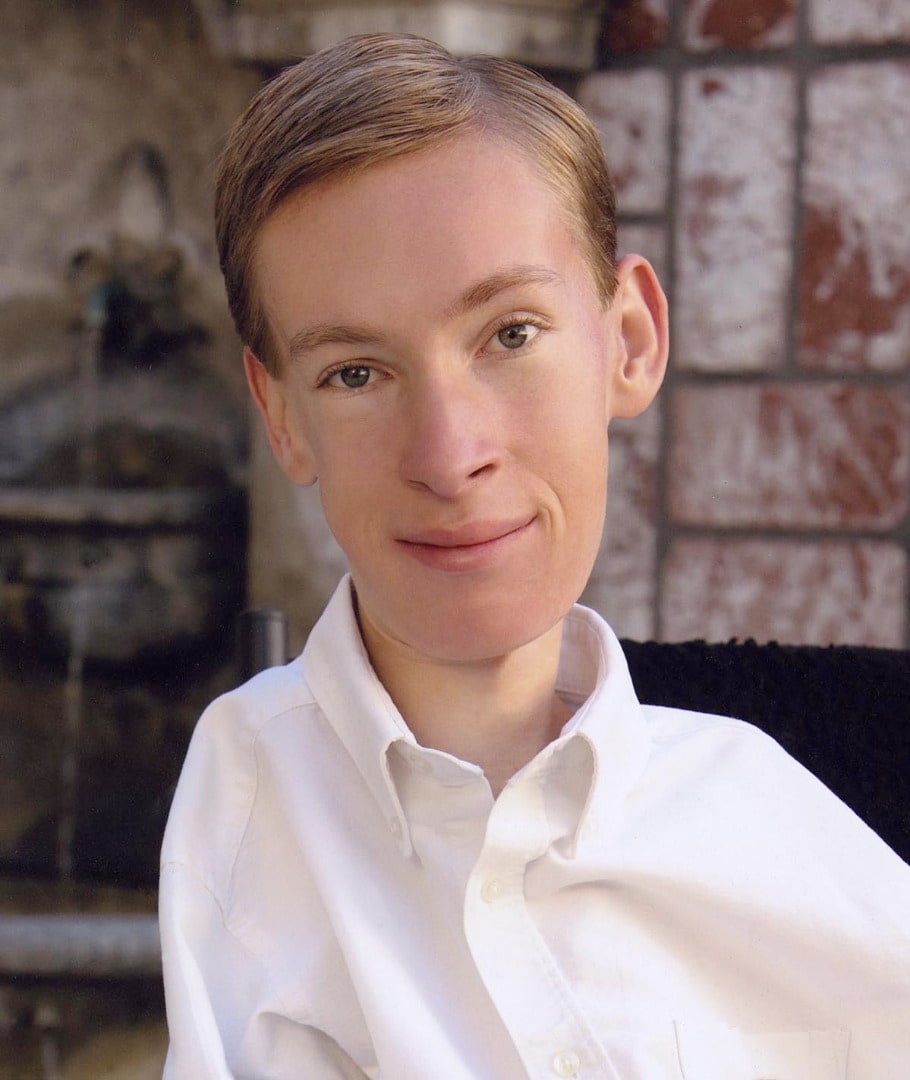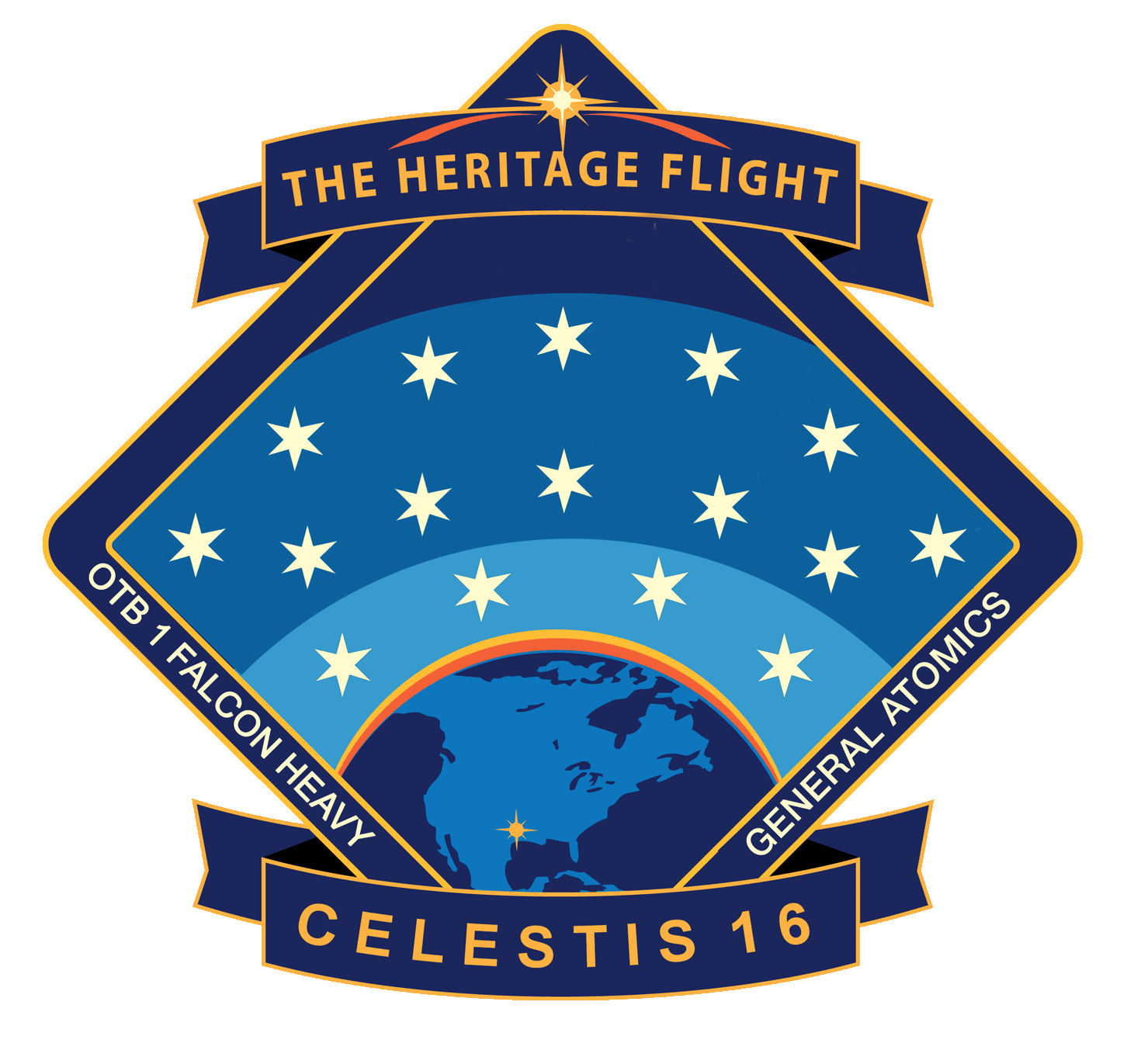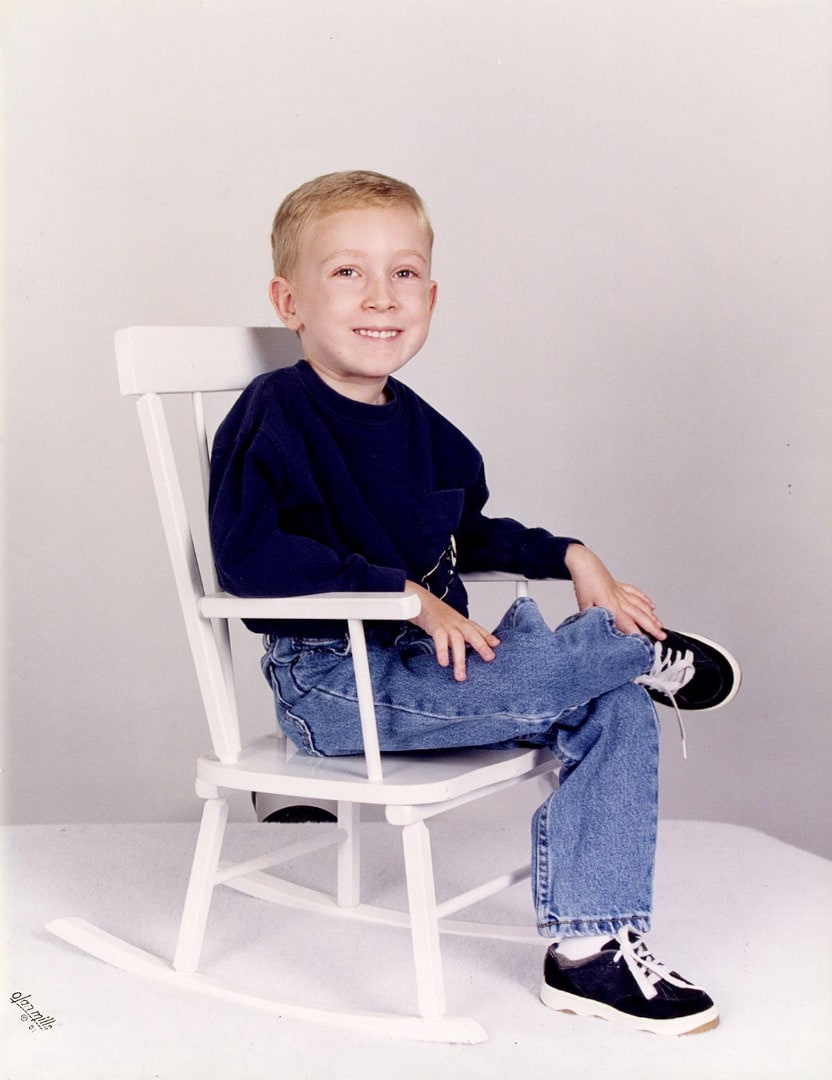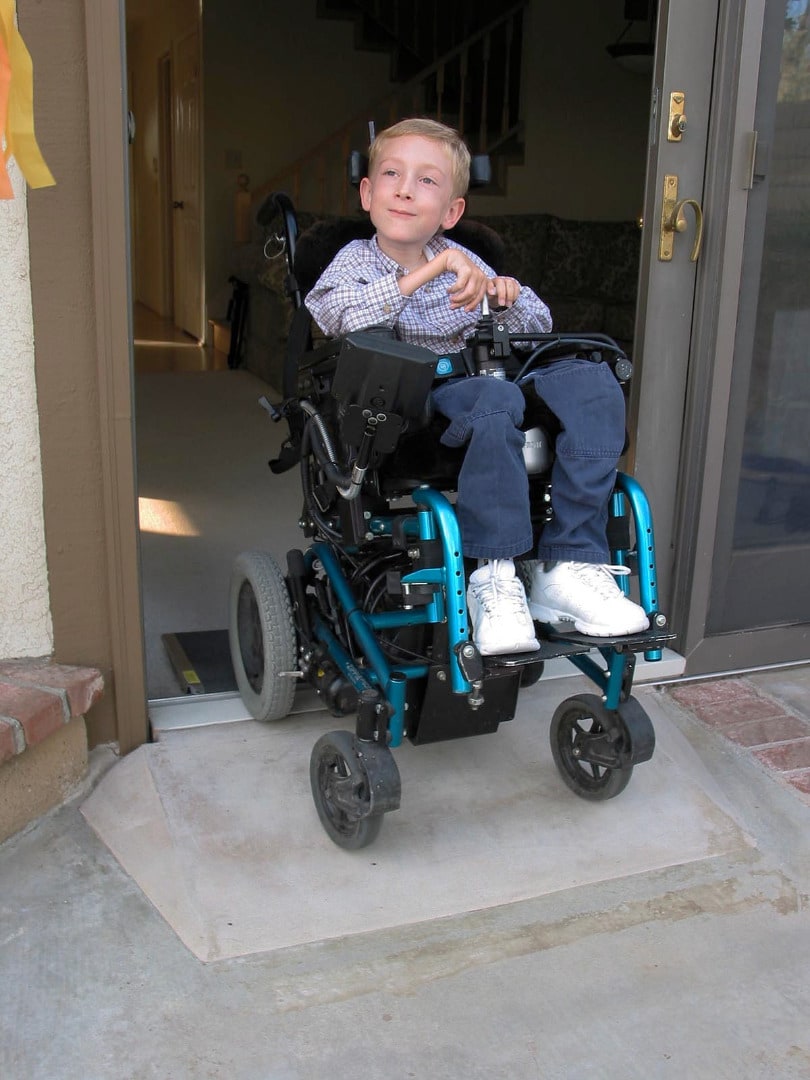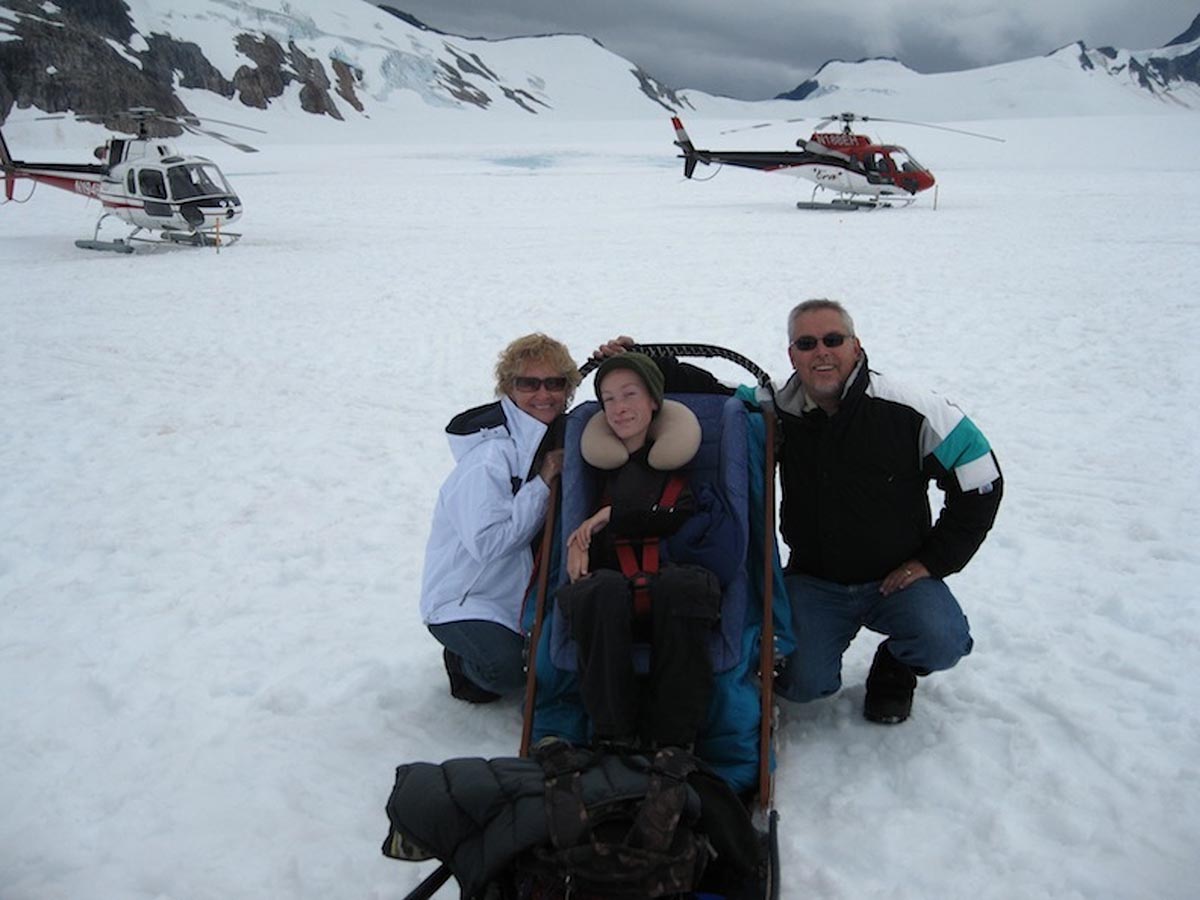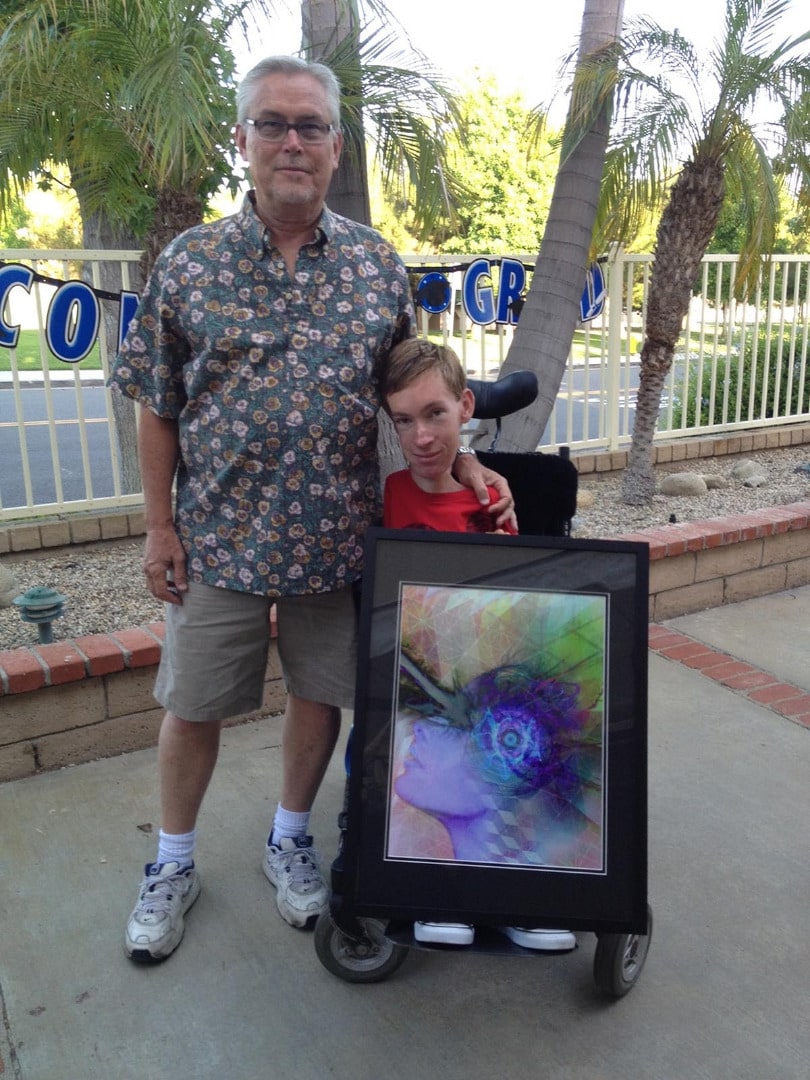I've tried, and tried, to find the words to write a simple eulogy for Coleman. After many months, I concede; I'm not able to do justice, nor are there words to accurately describe his life and his amazing accomplishments. Coleman was my absolute hero, my best friend, and he was also my son. So, I'll try my best for more of a biographical eulogy of what an amazing human this world has lost.
Coleman was born June 20, 1996. Not long after everyone who saw him said, this is an unusually special little person. He was almost Angelic in appearance, but when he looked at you, had the look of a wise old soul. His sparkling clear eyes, were extra curious, intense darting at everything and everyone around him, while stopping to rivet right into yours. Constantly smiling, forever laughing, he was an extremely happy baby. Also, unusual was he started saying simple words by age 5 months, forming simple word combinations at age 8 months and simple sentences at age 10 months. He was hyper alert, curious, unusually bright. He began asking questions about everything around him, as if super excited to experience life in a hurry. Then, at age 11 months, hanging onto my fingers, he was still not able to carry his weight, nor beginning to walk. I asked him if he was OK and he answered "No". Soon after many grueling tests, Coleman was diagnosed with a genetic neural muscular disease (SMA Type II). We as parents were told, he would never walk, be extremely weak, very fragile, even too weak to breathe normally. We were told that there was no cure, nor treatment in sight and may have a very short life. Although, SMA doesn't affect brain function, nor a child's cognitive abilities. We were given little hope outside the Human Genome Project just finished. There may be the possibility of cures for genetic diseases as SMA maybe in 10 years?
So, his mother and I scraped resources, sought the best medical research minds, learned from them how to care for Coleman's SMA disease, with hopes he'd live long enough for a genetic cure. First we learned not to concentrate on Cole's inability to walk, but on helping his very weak breathing, which could cause his death. We learned to use the latest technology as even common colds or flu may become pneumonia and fatal. Still there was always this very young person with a shockingly incredible mind, who became an absolute joy to everyone's life he entered. At age 18 months he was the first person (let alone child) in the Western U.S. to learn how to use non-invasive medical breathing protocols to avoid a ventilator. Those same medical protocols are now used to treat and prolong the lives of thousands around the world. There are photos of Coleman in a medical textbook as he pioneered the new medical protocols with the guide of the research doctors.
Coleman was too weak and unable to walk, but he was bright enough for me as his father to adapt a toy electric car with a child bath seat for him to sit on and learn to ride on the grass with other kids playing in the park. From there he learned how to drive a borrowed power wheelchair at age 18 months. Coleman soon passed a power wheelchair test by driving three figure eights in a parking lot, driving into an office, around three desks, three trash cans and back out the door, without touching a thing with the power chair! Age 24 months, Coleman proved he could do it and received his first, very own power wheelchair (after many fights with insurance). He was rightfully proud, beamed with happiness and was now completely mobile to drive where other kids could go, with our supervision. At that time, against all odds, he was the youngest child known in Southern California to learn how to drive a power wheelchair!
By age three years, it become even more obvious that he had an amazing mind. He asked questions I could no longer answer without dusting off old college textbooks. It must have been in Coleman's destiny to fall in love with the concept of outer space. His grandfather flew supersonic jets on secret missions during the Korean War. His aunt Renee was a physicist working for NASA on formulas to fuel rocket launches, worked on Project Morpheus, and a chief engineer-manager on the Robonaut I & II. By age four Coleman was introduced to astronauts such as Frank L. Culbertson, who gave him a flight pin as Coleman was driving around NASA testing labs in his electric wheelchair with his Aunt Renee's supervision. At age five, it was to hear, as he came home his first day at school and asked, "where are all the other kids in wheelchairs?" From there on, we started becoming not just father and son, but best friends too. It was on one of our Friday Play dates, Coleman got to see his first Star Wars movie. After that, his life was forever changed. He became a complete and total Star Wars fanatic with an obsession to go into outer space. Coleman continued to desire going into outer space his whole life, not only for the adventure, but because he very well understood the burden of Earth's gravity was causing him to be too heavy to move against it with his weak muscles. He believed, if he could just be free of gravity, he could move as freely as the other kids or any able bodied person down here on Earth.
At this time Coleman could no longer sit up. He was too weak, as his spine was collapsing, making it even harder for him to breathe. He needed to have a 12-hour surgery, with two rods implanted and a complete spinal fusion from C-1 to his pelvis. He knew he had a 50% chance to survive the surgery and less without. The surgery didn't go well and left him so he would never sit up nor drive his wheelchair again. Coleman as a 10-year old child had to decide for himself if he wanted to risk another surgery, to make it possible for him to sit up. He knew the odds and braver than any one I've ever met, made the decision to have a second back surgery. After many tears, I told him that after he healed, I'd take him anywhere in the country he wanted to go. He of course picked Alaska. The second back surgery gave him the ability to sit up, left him weaker and he could barely hold his head up, nor move with the exception of his index finger on his left hand. He now only had his one finger able to move and drive his wheelchair, as the rest of his body was too weak. After he healed, I took a term off teaching, his mother and I put him in our family VW van, with all his medical equipment and drove him up highway 1 from Southern California to Vancouver Canada. In Vancouver we wheeled him on a cruise ship where he could drive his wheelchair all over the entire ship as we cruised up and back to Alaska. We pre-arranged a helicopter in Juno, to take him inland to a glacier, to a real dog sled camp where he was put on a dog sled and he rode across an Alaskan Glacier for the day. Then, that very same night, as a 13-year old, he boogied on the ship's dance floor to a live band. While, I watched him lead a Conga line holding on the back of his wheelchair as fifty plus adults and kids danced the Conga, hanging on behind him around the ship's dance floor, around the tables and chairs, out the door and back in the other side in the late Alaskan night. We returned home after a month trip of a lifetime.
Unfortunately for Coleman, neither my wife nor I was an astrophysicist as his Aunt and Grandfather. We are both visual artists and parents working several jobs to stay afloat. Therefore while his mom worked, I needed to take a very young Coleman with me to college where I taught upper division art and design classes at night. He was set up with his art markers on his wheelchair table while I lectured and critiqued. The students embraced him and we included him in the class and critiques. We needed to buy computerized chess games for Coleman as I nor anyone we knew could keep up with him. I enrolled him in competitive Chess Camp with daily competitions. Even though physically he could barely move the pieces, I learned insight into Coleman's amazing heart. I watched him secretly throwing games or losing, out of empathy for other kids. When I pulled him aside and privately assured him I knew what he was doing, he conceded that beating the other kids made them unhappy. He he didn't want to hurt them, he just wanted friends and to see them happy winning too. At age 11, Coleman was tested by several public school district psychologists for his I.Q. He tested as "cognitively advanced twenty year old", the highest the district test went. Age 13, I sought to have Coleman tested by a well known psychologist who specialized in gifted children. Coleman tested as one of the highest scores he'd ever tested. "149+/152- WISC 7", "Severely Gifted". We had all known he was obviously smart, he now had to deal with it straight on, as well as his physical disability. In a family meeting with the psychologist, Coleman was informed he could now attend several well known universities which had programs for "gifted children". Coleman was not happy at all and became upset. He broke down and said, "It's bad enough being in a wheelchair, I don't want to be smart too". Coleman had few peer level friends and no one to look up to that was in a wheelchair like him. I informed Coleman, one of the smartest men in the world drove a wheelchair just like him. And so, we reached out by e-mail to Stephen Hawking, who graciously responded, and with help from an aid communicated with Coleman, even inviting him to one of Mr Hawking's Cal Tech lectures on his US tour. Unfortunately, we were out-of-state for a SMA medical conference and Coleman missed meeting the one person he could relate to, while we hoped for the next time.
By age 14 years, Coleman had already read all the literary classics and countless novels of science fiction, but he was also listening to music from classical to classic rock to jazz. Outside of Star Wars and video games, Coleman was still having difficulty fitting in with his able-bodied peers and many adults had difficulty keeping up with him intellectually. Still he was a kid and we understood his desire to fit in and have peer age friends. Coleman interviewed and was accepted into an elite college prep school which had other "smart kids" his age. As Coleman was too physically weak to move in order to write or use a computer keyboard, he kept up and took all his classes by teaching himself to use his one finger touch typing all his essays and homework on a track pad or his iPhone, which he'd send them to his laptop for editing. This generally meant it physically took several times longer to do his homework than an able-bodied student but I never heard him complain. By age 15 years, Coleman had studied and learned to write software code to program an advanced level robot for the science department at his school. It brought tears to us all, seeing the robot take a couple steps, then do a dance step before bowing. Coleman now became obsessed with computers and robotics which was soon to be his future.
For Coleman's 16th birthday, he received professional level music software for his laptop. A digital music producer was hired to teach him the advanced software. When the instructor arrived two weeks later and after a one hour class, he curiously asked how long Coleman had been using the software? We were then informed, he couldn't teach him anything, as Coleman already knew as much as him after years of learning and using the software. I asked him if he could perhaps teach him music theory and he did. This became the beginning of Coleman's music career. Coleman once asked me why I became an artist, I joked "to meet girls as I was shy". Coleman caught on, and soon became the DJ for his high school dances. Then he was commissioned to DJ parties, then corporate events, he even had groupies from the lower grades following him. He started composing original music on his computer, reaching out and making friends at school as well with internationally known digital music producers who helped him. This is when he started using his computer and software to create digital fine art. Soon, he was trading his artwork to famous digital musicians for their input and help. Many a night, Coleman and I laid in bed into the morning hours, listening to music, discussing art, talking about quantum mechanical theory physics, astrophysics and his philosophies. He had the most amazing mind.
After high school Coleman was accepted into a University of California with a full scholarship to his PhD in Cognitive Science, (hybrid study of human interaction with technology as computers and robotics) with a Minor in Philosophy. By age 18 years, Coleman's artwork was discovered by an internationally known digital fine artist. He wrote of meeting this amazing person Coleman, and his digital artwork. Overnight, Coleman became an internationally recognized digital fine artist, as well as beginning to create his own original digital music. He gained patrons and followers from 64 countries who followed his artwork and purchased his art prints. At age nineteen (they didn't know his age), Coleman applied and was asked to do a one-man art show at another college. This is something usually only granted to someone with a long established art career. His first one man show had over two hundred people come to the gallery opening while other college students wrote papers about his digital artwork. He did his artwork late into the night, while a full time student and maintaining near all A's in college. All this was done on his laptop computer, with only very slight feather touch strength of one finger on his left hand moving a 1/2" diameter area on a computer track pad.
Coleman died after a tragic accident, when left alone with an untrained caretaker in his college dorm. He was age 20, just coming into his own as a scholar, an artist, a music composer, a scientist, a philosopher and as always, a free thinking, independent young man. Near completely quadriplegic, in an electric wheelchair since a baby; Coleman had accomplished more than many of us do, with more courage, class, empathy and love for everyone he met. Coleman touched so many lives and brought tremendous joy to all of us fortunate to have time with him.
And, so as you see, no matter how I try, I can't write words to do justice to what a wonderful human and life Coleman shared with us. I was lucky enough to be his father and as we used to say every night at bedtime, "To Infinity and Beyond", "That's how much I love you!"
Rest In Peace,
Dad
Post Script:
* One month before Coleman's death, the first ever treatment for SMA was approved by the US, FDA.
* Fifteen months after Coleman's death, the first genetic cure was approved by the US, FDA.
* In the future, babies born with the genetic disease of SMA will have the possibility to be completely cured of the disease SMA. To see Coleman's artwork see: colemanhampton.com

